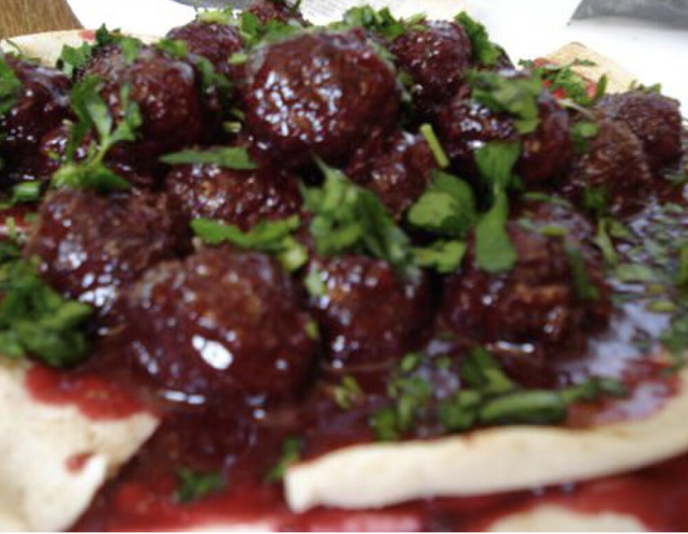The Culinary Diversity of the Levant: Comparing Traditional Dishes Across Jordan, Lebanon, Syria, and Palestine

By: Rania Basria / Arab America Contributing Writer
Imagine the Levant not just as a geographical region, but also as a vast kitchen where each country prepares its own interpretation of its shared tradition. The Levant extends over the eastern Mediterranean and includes Jordan, Lebanon, Syria, and Palestine. Arab America Contributing Writer, Rania Basria explores how each has a distinct culinary taste that reflects its own culture, history, and geography, but is linked together by a tapestry of shared ingredients and traditional recipes.
The history of Levantine cuisine is one of variety built over millennia, impacted by empires that passed through the centuries, leaving a rich trail of spices, techniques and recipes. This region’s beautiful grounds generate an abundance that serves as the foundation of its food traditions ”olives, wheat, fruits, and vegetables are classics here, used extensively in all four cuisines.
Jordan’s food culture is heavily influenced by its Bedouin traditions, with emphasis on substantial, shared meals that greet tourists with warmth and abundance. Take, for example, mansaf, the country’s national delicious meal. It’s a feast on a plate: lamb, which represents charity, is cooked in jameed, a very unique yogurt sauce, and paired with aromatic rice. This meal represents the heart of Jordanian hospitality.
On the other hand, Lebanon has a culinary palette as diverse as its history. At an intersection of societies, foods like tabbouleh and kibbeh combine Mediterranean freshness with Middle Eastern deliciousness. Lebanese food are frequently colorful arrays of mezze small dishes designed for sharing and conversations, reflecting the outgoing spirit of Lebanese society.
When you visit Syria, you will find a cuisine known for its sophisticated spice blends and a fondness for desserts such as baklava. Syrian meals tend to be a multi-sensory experience; the scent of shawarma, which is marinated and then cooked to perfection, fills the air and tempts the palate. Syrian meals are as complicated as the country’s varied history, with each spice reflecting a tale of trading, migration, and settlement.
Palestine produces a culinary identity that is closely linked to the land and the seasons. Dishes in this region are frequently based on what is locally available, making olive oil a household necessity. Musakhan, a pleasant meal of roasted chicken with sumac and onions served on flatbread, represents the Palestinians’ connection to the land and community.
These distinct culinary traditions also share common threads, such as the love of hummus and falafel, which are adapted to local tastes with subtle tweaks. Such dishes not only showcase the interconnected history of these regions, but also their geographical proximity, which has undoubtedly facilitated the blending of culinary practices.
New patterns emerge while being deeply rooted in history. The global migration from these nations has spread their food traditions over the world, creating new culinary landscapes that keep growing and captivates. Furthermore, the celebration of food in the Levant extends beyond ordinary meals. Festivals and religious holidays, such as Ramadan, Easter, and Yom Kippur, offer unique foods cooked with care and shared among community members, emphasizing the role of food in cultural and religious expression.
In essence, the culinary variation of the Levant offers a tale of unity and uniqueness. Jordan’s mansaf, Lebanon’s mezze, Syria’s shawarma, and Palestine’s musakhan represent an area steeped in heritage yet still dynamic and growing. Understanding and enjoying these cuisines provides more than simply culinary pleasure; it provides a glimpse into the cultural and historical core of the Middle East. Each meal is a chapter in a much broader tale, urging us to experience and learn.
Exploring these different culinary landscapes not only satisfies our palates, but also broadens our comprehension of how food is intertwined with cultural identities. The continued evolution of these cuisines, fueled by both tradition and innovation, promises to continue influencing and improving global culinary experiences. This tour through the Levant’s kitchens exposes not only cuisine, but also the heart and spirit of the people.
Check out our blog!








